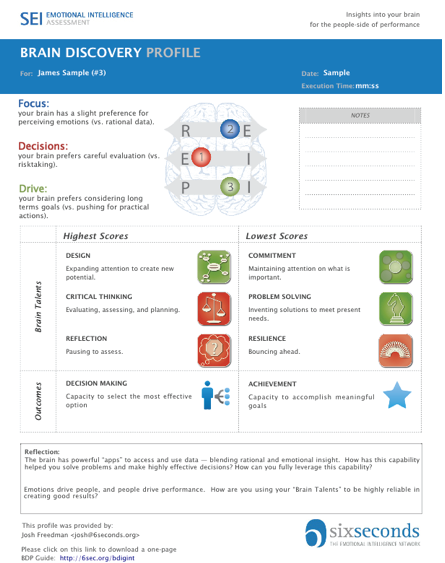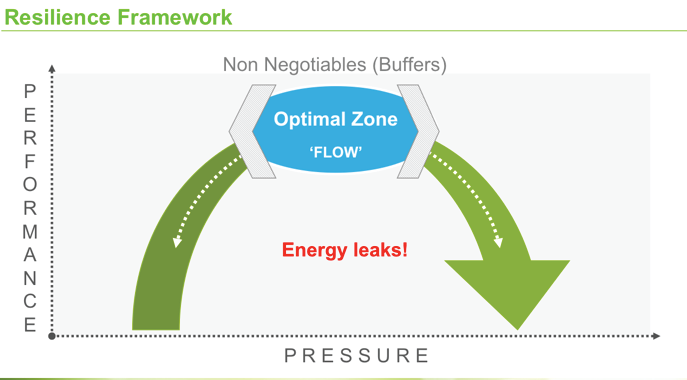Q: How do you get highly rational project management engineers to work better together?
A: Add EQ assessments to leadership training to measure and leverage talents. Lara Williams of Momentum4 brings us this case study to see how EQ tools in action can deliver positive outcomes.
The Clients
Since its founding in 1820, MWH has engaged in the engineering, construction, and management of some of the largest and most technically advanced water, hydropower, mining and transportation projects for municipalities, governments and multi-national private corporations throughout the world.
MWH’s team of approximately 7,000 employees include leaders, managers, consultants, policy and project advocates, information technology wizards, economists, statisticians, public relations professionals and financial experts. Bringing together such a talented pool of people has its obstacles, and MHW wanted to take their teams to the highest levels of performance. They developed a Leadership Programme to take the challenge.
The Project Outline
The Advanced Project Delivery Leadership Programme was created internally by Mark Sweeney (Learning and Talent Development Manager) and Greg Mullet (Head of Project Delivery MWH UK).
They developed a 2-day programme whereby senior project leaders would encounter real life scenarios from senior leaders in the business, where they were able to question and learn from each other, and where they could learn, not only about the competencies to make them better Project Managers (PMs).

An EQ Intervention
Momentum4, a consultancy focused on people performance and business, was brought in to augment the training and development initiative. After discussing the MHW’s challenges, we established three goals:
- to deal with diversity in the workplace
- to enhance team performance through emotional intelligence (EQ)
- to better understand and develop resilience
We wanted to ensure that each Project Manager had opportunities for their own learning and development and would be able to direct their learning into team performance on projects. We used the Brain Development Profiles (BDPs) from Six Seconds, a global pioneer in emotional intelligence, to enable them to understand diversity and their own EQ. A sample BDP is shown below:

Getting started, before participants got their results, we played a game of ‘Place Yourself on the Continuum’. This self-assessment exercise has each participant stand on a continuum in the BDP for Focus, Decisions, and Drive. This helped open the discussions around the Know Yourself part of the Six Seconds’ EQ model and participants were able to see how accurate they were after seeing their BDP results.
We then used the discussions on the continuum to look at difference in others. What happens if you are more ‘rational’ and you’re trying to building rapport with a client who is more ‘emotional’? What is that like and how do you interact to enhance these relationships? This created some fabulous debates with the group to deepen their understanding.
On the BDP, the 18 Brain Talents are metaphors for capabilities, what your brain likes to do and how smoothly and easily your brain functions. After a walkabout of the room to view all of the talents and discuss them, participants were able to see their lowest 3 and highest 3 talents as shown on their BDP. We discussed these talents and got them to play a game called ‘Above and Below the Line’.

Above and Below
Participants formed two groups and each group received a pack of Brain Talent cards. In their groups, they then had to place the talents that they felt were essential for leadership above the line on the floor. They then had to place the talents below the line that were seen as less desirable. This activity really provokes debate and challenging conversation that bring out their own EQ preferences, like careful evaluation before making a decision or just jumping in with innovative and fast-paced ideas. Of course, there is no right or wrong in this exercise, it’s just about gaining insights on self and learning about and from others.
Focused Outcomes
To bring all the learning together from the BDPs and the discussions we’d had, we put them into small groups and had them come up with a people-focused outcome for a project team. We told them they were the leadership team on this project. An example of one team’s outcome: to enhance knowledge sharing on their project team.
We then distributed a team Dashboard to the groups and advised them that these results were a compilation of individual reports from their project team. We then set the following exercise:
Exercise: To complete a SWOT analysis of the team and focus on what development suggestions they would come up with to increase performance in the area that they had agreed upon as an outcome, i.e. enhance knowledge sharing.
Below is the Dashboard they used:
Interestingly, the recommended suggestions from most groups were the same when using the data in front of them from the Dashboard. Here’s what they came up with:
- They recognized that this team was very average in their EQ and that they could perform much better if their EQ were developed. This would then have an impact on their performance outcomes and, with ‘achievement’ being the lowest, this was an area of concern.
- They were aware that the leadership team needed to take some responsibility for this and give the team a much clearer vision of where they were going and why they were doing what they were doing to ensure the team had a clear sense of purpose.
- They also suggested that a clear communications model was formed to ensure this was effectively conveyed.
- Other interesting insights were noticing that ‘collaboration’ was in the middle, so maybe this team could do with some team building to increase performance in this area.
Another Round for Resilience
After a break in the day, we then had another session with the group on resilience, linking with EQ and creating robust, sustainable behaviours for increased team performance. We focused on the word ‘energy’ quite extensively, looking at what it was that keeps you in the ‘Optimal Zone’ of performance. Where is your energy? Is it up? Is it down and, if it is, what do you have to do to get it back up? We addressed exercise, nutrition, sleep, and mindset. We discussed personal values and pursuing a goal to give you purpose. We also linked in Brain Hijacking theory and how, by managing your emotional tipping points, you can become better at dealing with stressful moments in life and create better outcomes. You can also help support others on your team to recognize these patterns and do something differently to enhance their performance.
Take Away Outcomes
Finally, we collectively identified the following outcomes to guide MWH’s path forward:
- To raise awareness of self and how you can impact on the team
- To raise awareness of difference in others and how to bring out the best in people
- To enhance collaborative team working and therefore team performance
- To use and experience some of the EQ tools
- To identify your 3 non-negotiables to maintain working in the ‘Optimal Zone’ of performance
- To look out for early warning signs for self and others when stress hits!
- To understand what being resilient means to you and how you manage working under pressure
More Training on the “People Side” Needed
Overall, the feedback was great and the team loved the whole experience and the two days that they spent together. As engineers, they have had a lot of training on technical competence, but not a lot of training on the people side. This meant that we had some great discussions, some of them very challenging.
As engineers, many on the team also embraced detail and accuracy. Some of the challenge in the session was about the BDP and how they wanted and needed more data from it. In a 3-hour session, we did what we could with it, however, if using these tools, please remember you can spend all day discussing some of the people performance outcomes that emerge.
They also had a big debate around the 18 talents on the Dashboard and asked if there was any information demonstrating percentage difference between each talent! I had not been asked this question before and so I threw it back to the group. “By knowing what the percentage difference is between each talent,” I asked, “what does that give you as a leader of the team?” Their response was that, “We would know if it was worth bothering about or not”. While an interesting thought, it is important to keep the group focused on the meaning and general ranking of the talents, which can be a challenge for the facilitator.
Notice Numbers, But Focus on Your People
Reflecting on this, I realized that when I look at team performance, I look at marginal gains and how even the smallest percentage is still worth focusing on to make a marginal gain difference. This is where data-driven people can lose sight of the people focus. Utilizing EQ tools in training is powerful source of data. I encourage the leadership teams to notice the numbers, but focus on your people. When leadership puts these two together, they can make decisions on how they might go about enhancing performance and moving forward.
- Youth for Youth – Celebrating Emotional Intelligence – IGNITE POP-UP Festivals in Saudi - February 8, 2022
- Igniting Hope in our Students: Three Sparks - March 23, 2021
- 5 SEL Check-In Activities for Your Classroom - March 16, 2021








This is a useful and powerful strategy for increasing the practical advantage of using Emotional Intelligence Intervention to increase skills in EI. Partnering with selected grade schools for EI Coaching in lieu of suspension for aggressive behavior in youth is a project that would interest me and a number of my followers.
Thanks for the systematic sharing. Very well articulated
Very insightful and thank for sharing the experience from a Faciliator’s view of the workshop.
It has giving me opportunity to use the BDP to enhance facilitation session for Leaders